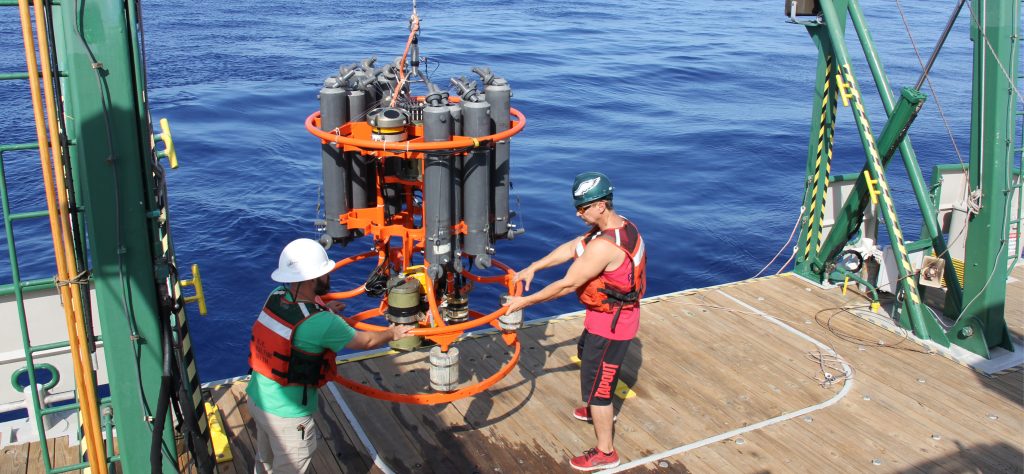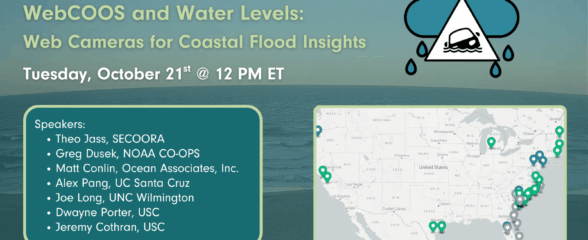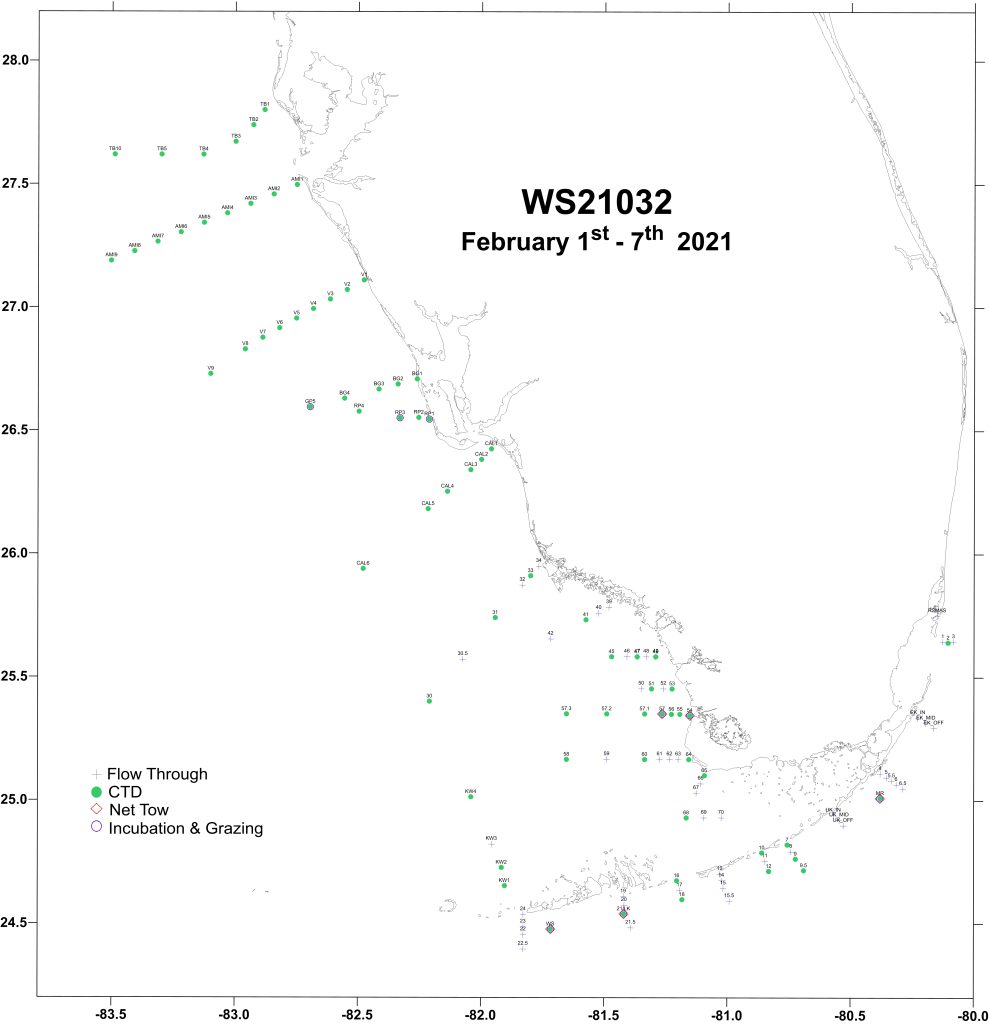
Scientists are heading to sea on the R/V Walton Smith to sample areas where red tide blooms are commonly present off the west Florida coast. Karenia brevis, the organism that causes red tide, forms blooms when elevated concentrations (>100,000 cells per liter) are present in the water. K. brevis produces toxins called brevetoxins that can cause massive fish kills, weaken or kill marine mammals, and, when the toxin becomes aerosolized and inhaled, cause respiratory distress in humans and marine mammals. The team of scientists will be comprehensively sampling a series of transects along the West Florida Shelf.
This upcoming survey is of particular interest because K. brevis has been observed in southwest Florida since December 2020 and offshore chlorophyll patches have been observed in recent remote sensing imagery (provided by the University of South Florida). Red tide will be detected while onboard by an Imaging Flow Cytobot, a flow cytometer that takes high-resolution images of all the microscopic particles present in water samples collected autonomously every 20 minutes during the survey.
Since 1998, scientists have been conducting water quality sampling missions along the west Florida coast as part of the South Florida Ecosystem Restoration Research project. The original mission of the project was to assess and evaluate the impacts and benefits of the Everglades Restoration project on downstream coastal ecosystems. The long-term dataset is critical for detecting degradations in water quality.
In recent years, the mission has been expanded to include biodiversity measurements through partnerships with the Marine Biodiversity Observing Network, the Florida Fish and Wildlife Conservation Commission-Fish and Wildlife Research Institute (FWC-FWRI)’s Harmful Algal Bloom program, and SECOORA.
“In partnership with FWRI and SECOORA, the research area has been increased to better examine the oceanography and chemistry in offshore areas inhabited by red tide. It has also allowed us to incorporate new technologies (such as the imaging Flow Cytobot) into the research cruise.” – Chris Kelble, NOAA’s Atlantic Oceanographic and Meteorological Laboratory (NOAA AOML).
This includes routinely monitoring oceanographic conditions and red tide in an area spanning offshore of Tampa Bay to offshore of Pine Island Sound. The map shows locations where scientists onboard the R/V Walton Smith will take water water quality measurements and deploy the Imaging Flow Cytobot to detect the presence or absence of K. brevis. The research team will include scientists from NOAA-AOML, FWRI, and the University of South Florida and remain at sea from February 1 – 7, 2021.
Kate Hubbard, who leads FWC-FWRI’s harmful algal bloom program, is enthusiastic about this collaborative effort to strengthen red tide observations: “Adding more routine and comprehensive measurements offshore provides us with an unprecedented snapshot of current conditions, and at the same time, allows us to strengthen our foundation for examining changes and trends in harmful algal bloom severity over time.”
Related news

SECOORA Webinar | WebCOOS and Water Levels: Web Cameras for Coastal Flood Insights
On October 21st at 12 PM ET, SECOORA is hosting a webinar with investigators from the Webcam Coastal Observation System (WebCOOS) project team and the WebCOOS Project Manager. Web cameras are a low-cost technology that can be used to document flooding impacts to coastal communities. Register here.

SECOORA Funding Opportunity Announcement: Letters of Intent Solicitation
SECOORA will submit a coordinated regional proposal in response to the anticipated FY 2026 Implementation of the U.S. Integrated Ocean Observing System (IOOS) funding opportunity. Letters of Intent to be considered for inclusion in SECOORA’s full proposal are due September 9, 2025.

SECOORA Hosts the First Surface Elevation Table (SET) Community of Practice Virtual Workshop
The SECOORA SET Workshop was virtual on July 17, 2025. More than 50 Community of Practice members and stakeholders joined this collaborative workshop to discuss SET monitoring, coastal resilience, and data-driven decision making in the Southeast.
